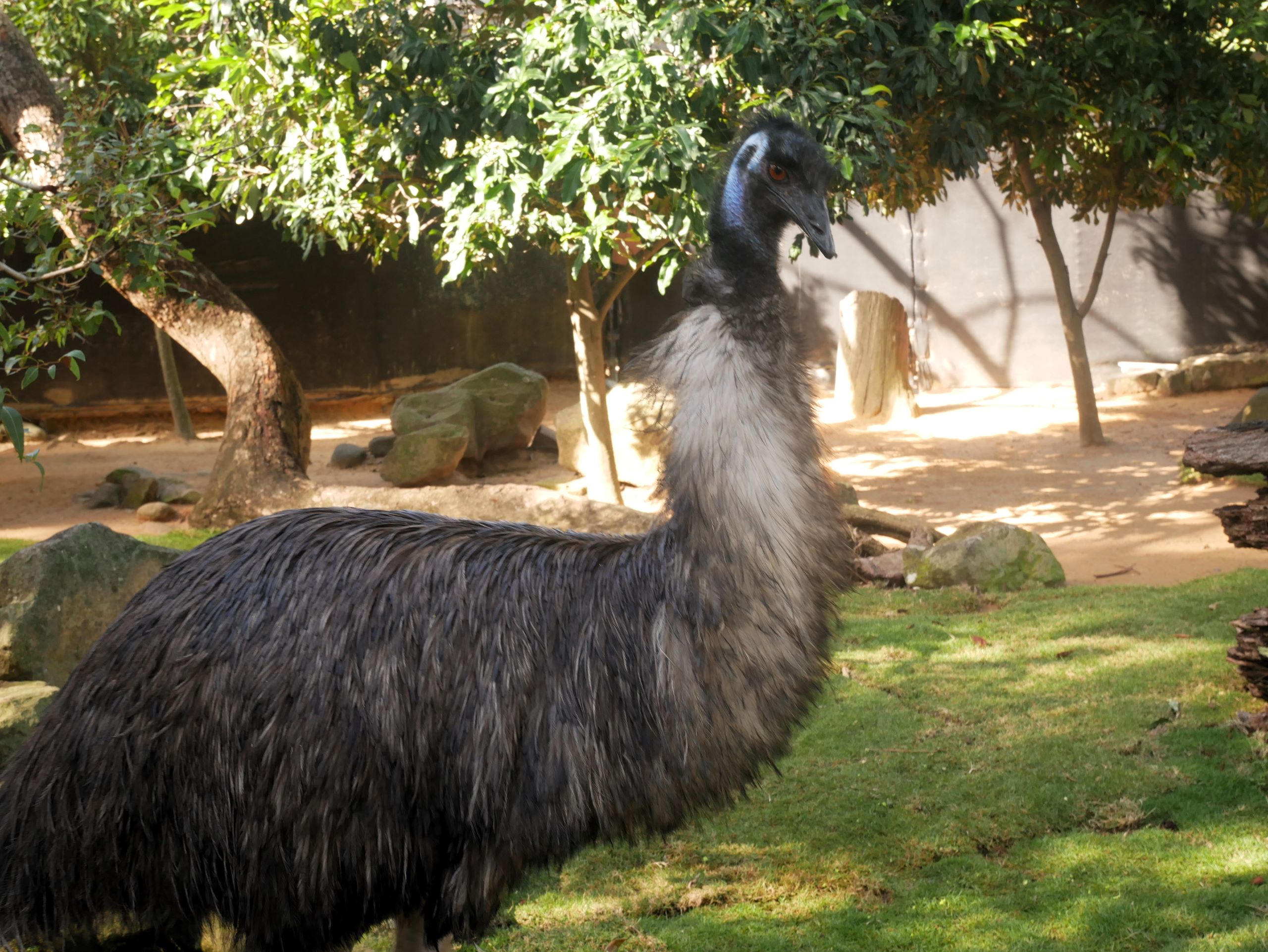Emus
Scientific Name: Dromaius novaehollandiae
Aboriginal Name: Birabayin, Murawung – Dharug Language – Sydney NSW Area
Emus are the second-largest birds in the world, but they can’t fly. Here are some fun facts about them:
- In Aboriginal Australian culture, emus appear in many Dreamtime stories, that explain the creation of the world. For example, the Yuwaalaraay people of north-western NSW, tell a tale of how the sun was created by a giant emu egg being thrown into the sky, bringing light to the world.
- The emu is an important symbol in Aboriginal culture and is often represented in traditional art, dance, and ceremonies. The emu’s footprints are also used as designs in Aboriginal art, to represent journeys or paths taken by the people.
- Emus are incredibly fast runners, and can reach speeds of up to 50 km/h. They use their long, powerful legs to run across the Australian outback.
- Emus have three toes on each foot to help them maintain balance when running at high speeds. Their large feet also help them walk on soft sand without sinking.
- Emu eggs are large and have a dark green color, which helps them blend in with the ground and stay hidden from predators.
- Emus don’t have teeth. Instead, they use their strong beaks to tear and swallow food. The stones they swallow help grind up the food in their stomachs.
- Emu feathers are soft and curly rather than smooth and sleek. This helps keep them warm during cold nights and cool during hot days.
- Emus love to take dust baths, rolling around in the dirt to clean themselves.
- Emus have a special adaptation to protect their skin from the harsh Australian sun. Their skin is covered in a layer of fat that shields them from sunburn.
- During mating season, emus perform a dance to attract a female. They sway their bodies, bob their heads up and down, and puff out their feathers to look impressive.
